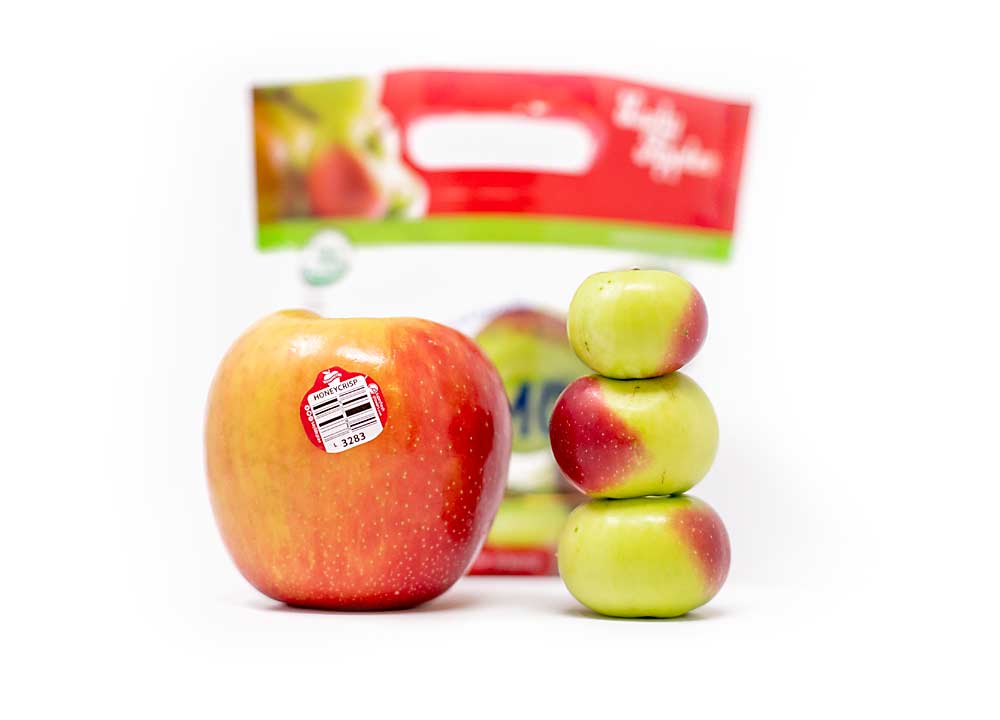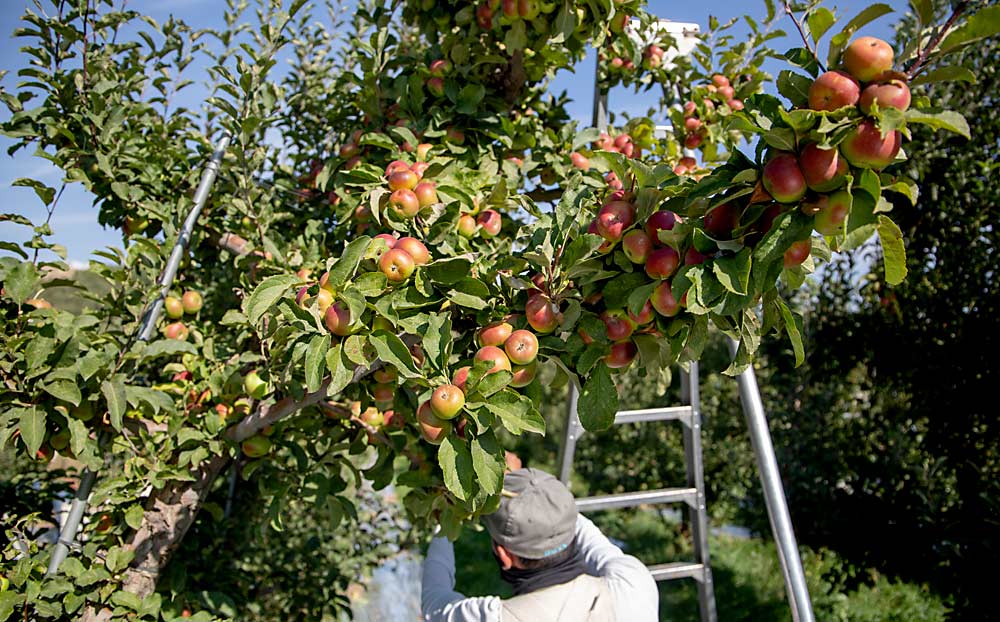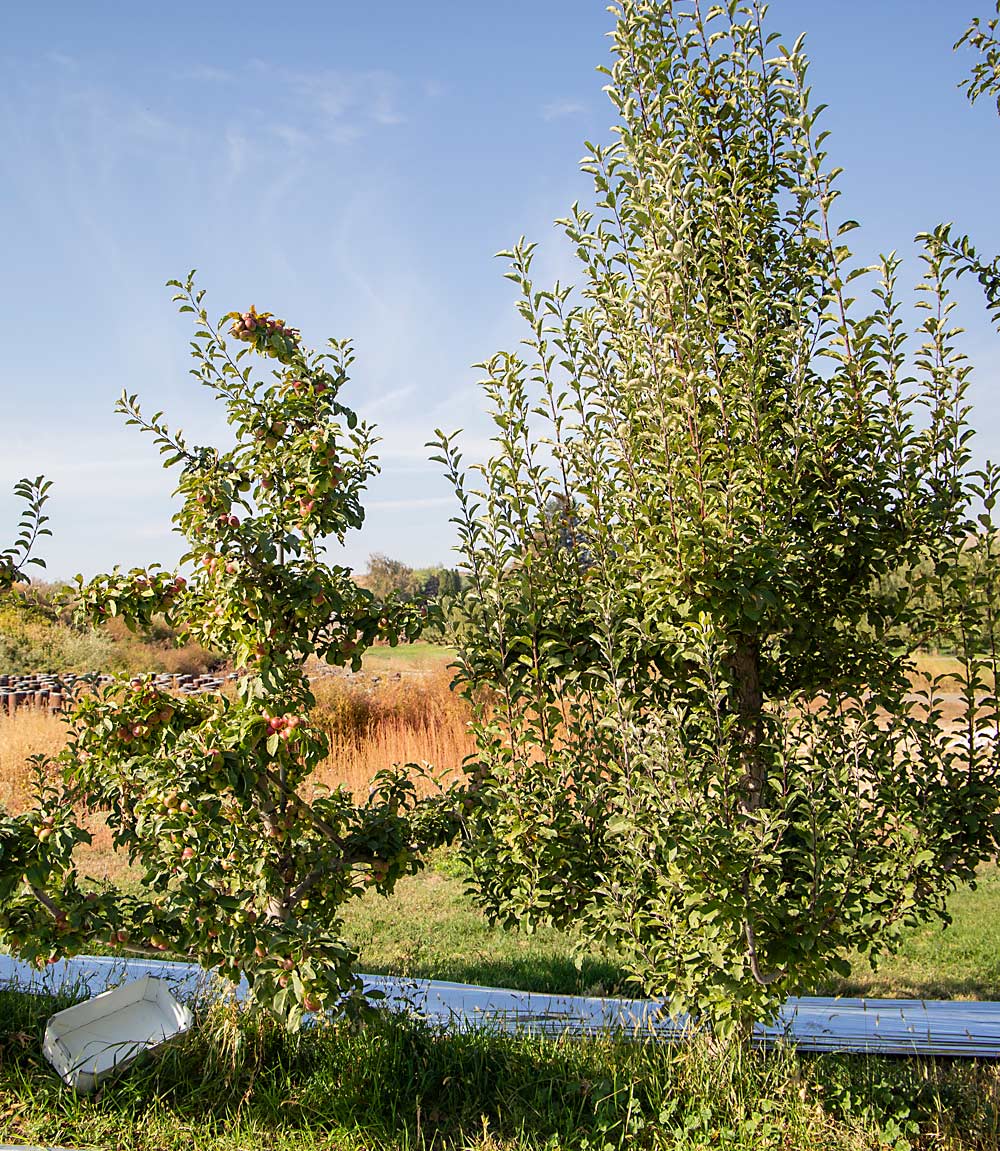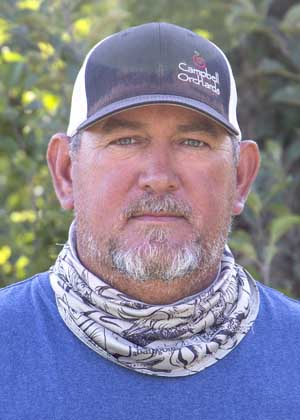
In an old-school packing shed in the hills west of Yakima, Washington, Campbell Orchards crews pack tiny apples for the fresh market.
Don’t confuse them with crab apples, obscure cider varieties, painted golf balls or toy fruit found in a preschool play kitchen.

They are called Lady Apples and they taste just as sweet and juicy as any fresh-pack dessert apple. They’re just very small — about 2 inches in diameter.
“That’s the size that the Lady Apple customers like; that’s the size apple we’re looking to grow,” said third-generation owner Craig Campbell.
Stack three of them in a tower and they would look a 72-row Honeycrisp in the eye. And that’s the way certain buyers want them. They are even a little smaller than the New Zealand variety branded as Rockit, packaged in plastic sleeves reminiscent of tennis ball tubes.
“Two, three bites, and it’s a great little apple,” said Campbell, who grows Honeycrisp, Pinova and cider apples, as well as pears, apricots and cherries. Campbell is also the founder of Tieton Cider Works.
With 9 acres, Campbell is one of the few West Coast producers of Lady Apples. He ships “several thousand” 12-pound boxes, sometimes divided into 1.25-pound pouch bags, mostly to California retail stores in the San Francisco Bay Area and Los Angeles. The buyers ship some to Hawaii and a few overseas.

A handful of Hood River, Oregon, growers produce roughly 9,300 Lady Apple boxes, said David Garcia, CEO of the Diamond Fruit Growers cooperative. The company sells to a lot of floral shops that use the apples, also commonly known as Christmas apples, for edible decorations.
“LA is really the big market for us anymore,” Garcia said.
Volume has been steady over recent years, Garcia said, though Diamond growers have, in past years, cut back on Lady Apple acreage.
“It has a real niche market right now, and you could exceed that real quick,” he said.

An ancient apple, a modern market
The history of the Lady and her aliases carries a tint of mythology. Some claim it was eaten in ancient Rome, but most historians cite its first appearance in the 1600s on the tables of French royalty, according to “Apples of Uncommon Character” by food author Rowan Jacobsen. A 17th century British writer noted that French women carried them in their pockets, while gardeners of Louis XIV discuss eating the apple whole “without ceremony” and placing it in wassail bowls.
The apple kept its association with Christmas when English settlers brought it to the United States. By the mid-1800s, New York shipped Lady Apples to London where they sold for high prices. They also adorned Manhattan store windows during the holidays.
Campbell’s family began farming in Central Washington in the late 1920s. After earning his horticulture degree from Washington State University, Campbell moved to California to work in the brokerage and distribution business for a shirttail relative in the Bay Area. In 1977, he formed his own company, which started selling Lady Apples from a grower near Yuba City. Other growers in the Sierra Nevada foothills had them, too; a few still do as part of their U-pick portfolios.
Campbell brought some budwood back to his family’s Tieton farm and experimented. In 1990, a variety needed to come out, so his farm grafted to Lady Apples. Since then, they have grafted over other trees, mostly Red Delicious, until they reached 9 acres.
Horticulturally, Campbell and his production manager, Roy Aceves, have decided the apple needs a light touch. They tried intense pruning and chemical thinning, but that produced big apples — a bad thing when tininess is the variety’s calling card.


Today, the block tends to alternate bear, and they just let it. They focus their pruning on the trees with a high crop potential and leave the others alone, giving them about half in production each year.
“We just leave it at that,” Campbell said.
They prefer semidwarfing rootstocks such as M.111 and M.7.
Crews color pick the bicolored apple, Aceves said, choosing only the fruit with a light green, almost white, background with a bright red blush on the exposed side. The apples grow in bunches on short stems and require delicate handling.
“I tell the guys to use both hands,” Aceves said.
A careful touch is required in the packing house, too. Campbell’s crews don’t wash or wax Lady Apples; they simply polish them by hand and pack them, sending them on their way along a manual roller track and out the door to their customers.
They usually pack Lady Apples into December, but sales were hot earlier in the fall, Campbell said. Christmas must have come early for Lady Apple fans.
—by Ross Courtney






Leave A Comment